Leading figures from Britain, the US and France debated the future of the world’s food and drinks industry at the American Food Revolution. Liz Hamson reports
Are consumers being duped into thinking they get good quality food when they pay every day low prices? This was one of the controversial questions hotly debated at one of the sessions at last week’s American Food Revolution, which brought together top names from the UK, US and French food and drink industries to thrash out the key issues affecting what we eat.
During the session, chaired by Channel 4 News presenter Jon Snow, the panel of UK, French and American speakers, which included Jean-Paul Barat, director of product quality & development at Sainsbury and Patrick Holden, director of the Soil Association, were asked to speculate on the shape of the food chain of tomorrow and the ramifications of the multiples’ EDLP strategies on quality.
The debate, held at Michelin star chef Raymond Blanc’s Le Manoir Aux Quat’ Saisons restaurant in Oxfordshire, began tentatively but soon polarised, with Barat, the lone voice of the multiples, coming under mounting pressure from the rest of the panel and the audience.
First on the agenda was organic food. The panel agreed that the market was limited by a poor understanding of the qualitative difference between organic and normal produce in supermarkets and the huge success of EDLP strategies which had shifted shoppers’ focus to price.
The upshot, warned Holden, was a nation of consumers who were no longer aware of the nutritional content of what they were eating.
He said: “We’ve created a situation where we’re no longer in touch with food and that has frightening implications.
“The supertanker that’s taken us down that direction hasn’t stopped. Yet there is an intuitive uprising among the people that this is profoundly wrong. That’s why the organic market has grown. The question for the industry is whether the supertanker is going to carry on going in that direction.”
There was hope, he said, recalling Tesco chief executive Sir Terry Leahy identifying organic as a growing market. But the vast majority of consumers remained reluctant to buy food they perceived as more expensive.
In the US, the problem was exacerbated, argued Marion Nestle, professor of Nutrition at New York University, by the fact that food was in such plentiful supply that the main
role of the supermarkets and suppliers had become largely one of encouraging people to eat more than they physically needed.
There would be serious ramifications if the food industry did not put its house in order, warned Steve Schimoler, general manager of Sysco Corporation, North America’s largest foodservice marketing and distribution organisation.
“The trial lawyers are circling like vultures and targeting the food industry. It’s ludicrous to hold manufacturers accountable. It may be the first time in history that large industry is feeling moral pressure to change. The reality is that the supertanker is going to continue going: it’s a question of what you put on the supertanker.”
The panel acknowledged the growing consumer backlash against the multiples in the UK as a result of their growing power and the mistrust created by the recent spate of food scares.
Seizing on the power issue, Snow asked: “Isn’t one of the key problems that more power is concentrated in fewer hands. How do you educate in the face of such power?”
Holden responded with another anecdote about Sir Terry, who he said had described Tesco as being between a rock and two hard places: the rock was Wal-Mart and its emphasis on price and the hard places were the customers and the shareholders. Holden agreed: “The public are the key stakeholders in the future of food. It’s no good blaming supermarkets and food producers.”
However, as the debate progressed, it was clear from the increasingly antagonistic questions put to the sole representative from the multiples, Sainsbury’s Barat, that they were being held to account.
Snow accused supermarkets of not being interested in educating people to eat more healthily because they were primarily “in the business of seduction”.
Barat, who joined Sainsbury from Selfridges in November, insisted that was not the case and the attitude of the multiples over health had changed for the better.
Snow cited the statistic that £20bn a year is spent on additives. Pressed on whether Sainsbury would reduce the number of additives it includes in its products, Barat answered: “I’ll compromise myself and say yes,” setting a five year deadline.
A member of the audience asked whether the retailer would remove sweets, crisps and soft drinks from the checkout. Barat underscored the retailer’s recent commitment to do so, adding: “If you find any sweets at the checkout, call me.”
The manufacturers were not immune from criticism. Snow asked why it wasn’t possible to develop junk food that was healthier. “Because it costs more,” was Nestle’s blunt reply.
But the debate soon returned to the multiples. Blanc, who was sitting in the audience, warned retailers they could not continue to tell consumers “half the story” about the food they were eating.
Henrietta Green, founder of the Food Lovers’ Fair, praised efforts to source more food locally, but questioned the loose definition of “local”.
She added: “The equation that they never make is that quality costs. They make the consumer feel that whatever they buy will be good, which is irksome, patronising and a downright lie. What is not made clear is the standards to which a £1.99 chicken is made.”
Snow agreed and added: “Big companies are in the frame here. Is it possible to entice consumers by suggesting that a £2.50 chicken is better quality and better value?”
All eyes turned to Barat once more. “Our cheapest chicken is good,” he insisted.
He conceded that the dominance of the EDLP model with Morrisons’ acquisition of Safeway meant that “price will always be a factor”. But he said: “There’s a true effort to inform consumers. We’re not saying we’re doing it perfectly, but we are working on it.”
Sainsbury currently sources 3,500 lines of local produce and 65% of its organic produce from UK suppliers, 20% more than the market average.
The panel agreed that it was vital that retailers and manufacturers worked together to develop more consumer trust in food.
But with the grip of the EDLP players on the market so tight, asked Snow, “can we move into a new era when consumers are lured into stores on things other than price?”
Producing high quality food was at the top of Sainsbury’s agenda, said Barat. “Bringing artisanship into the business is key. We are doing things that other multiples are not doing,” he said, citing the fact that Sainsbury had outsourced the running of some of its fish and meat counters to local suppliers, adding that it was about to take on a new executive chef in the form of John Wood, the former head chef at Cliveden, who joins in July.
A member of the audience remained sceptical. “Changes will only happen if the board backs them. Will Sainsbury directors back you?” he asked testily.
Barat was unequivocal: “There’s a commitment. Quality is becoming our number one priority. We can’t continue a price war with Tesco and Asda. Sainsbury could have hired someone from a multiple but they came and got me and they are giving me the tools I need.
“Sainsbury is investing millions of pounds in quality at every day dependable prices. You’ll see results before 2004 is over.”
The retailer will need to produce results if it is to dig itself out of the hole it is in and escape the worst of the consumer backlash being whipped up against the multiples.
Most of those foodies present believed that if the multiples focus on price alone, they would jeopardise not only food quality but the entire future of the industry.
Are consumers being duped into thinking they get good quality food when they pay every day low prices? This was one of the controversial questions hotly debated at one of the sessions at last week’s American Food Revolution, which brought together top names from the UK, US and French food and drink industries to thrash out the key issues affecting what we eat.
During the session, chaired by Channel 4 News presenter Jon Snow, the panel of UK, French and American speakers, which included Jean-Paul Barat, director of product quality & development at Sainsbury and Patrick Holden, director of the Soil Association, were asked to speculate on the shape of the food chain of tomorrow and the ramifications of the multiples’ EDLP strategies on quality.
The debate, held at Michelin star chef Raymond Blanc’s Le Manoir Aux Quat’ Saisons restaurant in Oxfordshire, began tentatively but soon polarised, with Barat, the lone voice of the multiples, coming under mounting pressure from the rest of the panel and the audience.
First on the agenda was organic food. The panel agreed that the market was limited by a poor understanding of the qualitative difference between organic and normal produce in supermarkets and the huge success of EDLP strategies which had shifted shoppers’ focus to price.
The upshot, warned Holden, was a nation of consumers who were no longer aware of the nutritional content of what they were eating.
He said: “We’ve created a situation where we’re no longer in touch with food and that has frightening implications.
“The supertanker that’s taken us down that direction hasn’t stopped. Yet there is an intuitive uprising among the people that this is profoundly wrong. That’s why the organic market has grown. The question for the industry is whether the supertanker is going to carry on going in that direction.”
There was hope, he said, recalling Tesco chief executive Sir Terry Leahy identifying organic as a growing market. But the vast majority of consumers remained reluctant to buy food they perceived as more expensive.
In the US, the problem was exacerbated, argued Marion Nestle, professor of Nutrition at New York University, by the fact that food was in such plentiful supply that the main
role of the supermarkets and suppliers had become largely one of encouraging people to eat more than they physically needed.
There would be serious ramifications if the food industry did not put its house in order, warned Steve Schimoler, general manager of Sysco Corporation, North America’s largest foodservice marketing and distribution organisation.
“The trial lawyers are circling like vultures and targeting the food industry. It’s ludicrous to hold manufacturers accountable. It may be the first time in history that large industry is feeling moral pressure to change. The reality is that the supertanker is going to continue going: it’s a question of what you put on the supertanker.”
The panel acknowledged the growing consumer backlash against the multiples in the UK as a result of their growing power and the mistrust created by the recent spate of food scares.
Seizing on the power issue, Snow asked: “Isn’t one of the key problems that more power is concentrated in fewer hands. How do you educate in the face of such power?”
Holden responded with another anecdote about Sir Terry, who he said had described Tesco as being between a rock and two hard places: the rock was Wal-Mart and its emphasis on price and the hard places were the customers and the shareholders. Holden agreed: “The public are the key stakeholders in the future of food. It’s no good blaming supermarkets and food producers.”
However, as the debate progressed, it was clear from the increasingly antagonistic questions put to the sole representative from the multiples, Sainsbury’s Barat, that they were being held to account.
Snow accused supermarkets of not being interested in educating people to eat more healthily because they were primarily “in the business of seduction”.
Barat, who joined Sainsbury from Selfridges in November, insisted that was not the case and the attitude of the multiples over health had changed for the better.
Snow cited the statistic that £20bn a year is spent on additives. Pressed on whether Sainsbury would reduce the number of additives it includes in its products, Barat answered: “I’ll compromise myself and say yes,” setting a five year deadline.
A member of the audience asked whether the retailer would remove sweets, crisps and soft drinks from the checkout. Barat underscored the retailer’s recent commitment to do so, adding: “If you find any sweets at the checkout, call me.”
The manufacturers were not immune from criticism. Snow asked why it wasn’t possible to develop junk food that was healthier. “Because it costs more,” was Nestle’s blunt reply.
But the debate soon returned to the multiples. Blanc, who was sitting in the audience, warned retailers they could not continue to tell consumers “half the story” about the food they were eating.
Henrietta Green, founder of the Food Lovers’ Fair, praised efforts to source more food locally, but questioned the loose definition of “local”.
She added: “The equation that they never make is that quality costs. They make the consumer feel that whatever they buy will be good, which is irksome, patronising and a downright lie. What is not made clear is the standards to which a £1.99 chicken is made.”
Snow agreed and added: “Big companies are in the frame here. Is it possible to entice consumers by suggesting that a £2.50 chicken is better quality and better value?”
All eyes turned to Barat once more. “Our cheapest chicken is good,” he insisted.
He conceded that the dominance of the EDLP model with Morrisons’ acquisition of Safeway meant that “price will always be a factor”. But he said: “There’s a true effort to inform consumers. We’re not saying we’re doing it perfectly, but we are working on it.”
Sainsbury currently sources 3,500 lines of local produce and 65% of its organic produce from UK suppliers, 20% more than the market average.
The panel agreed that it was vital that retailers and manufacturers worked together to develop more consumer trust in food.
But with the grip of the EDLP players on the market so tight, asked Snow, “can we move into a new era when consumers are lured into stores on things other than price?”
Producing high quality food was at the top of Sainsbury’s agenda, said Barat. “Bringing artisanship into the business is key. We are doing things that other multiples are not doing,” he said, citing the fact that Sainsbury had outsourced the running of some of its fish and meat counters to local suppliers, adding that it was about to take on a new executive chef in the form of John Wood, the former head chef at Cliveden, who joins in July.
A member of the audience remained sceptical. “Changes will only happen if the board backs them. Will Sainsbury directors back you?” he asked testily.
Barat was unequivocal: “There’s a commitment. Quality is becoming our number one priority. We can’t continue a price war with Tesco and Asda. Sainsbury could have hired someone from a multiple but they came and got me and they are giving me the tools I need.
“Sainsbury is investing millions of pounds in quality at every day dependable prices. You’ll see results before 2004 is over.”
The retailer will need to produce results if it is to dig itself out of the hole it is in and escape the worst of the consumer backlash being whipped up against the multiples.
Most of those foodies present believed that if the multiples focus on price alone, they would jeopardise not only food quality but the entire future of the industry.


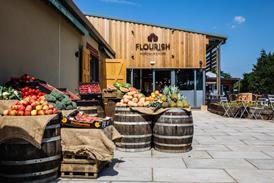
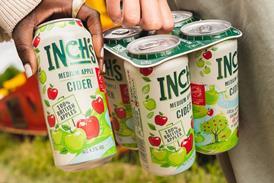






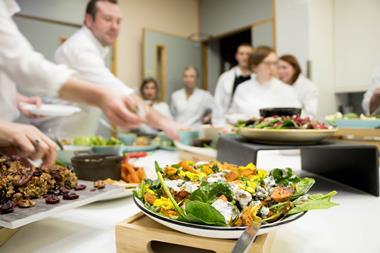

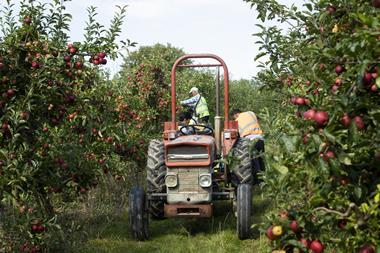

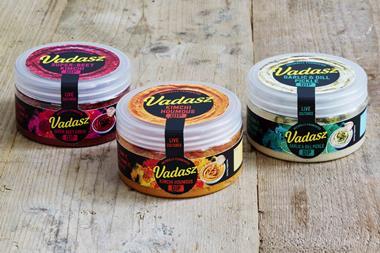
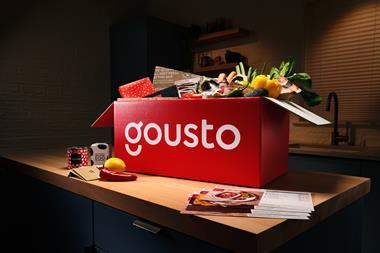
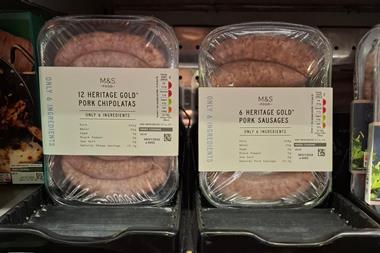
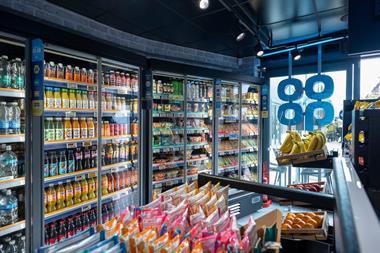
No comments yet